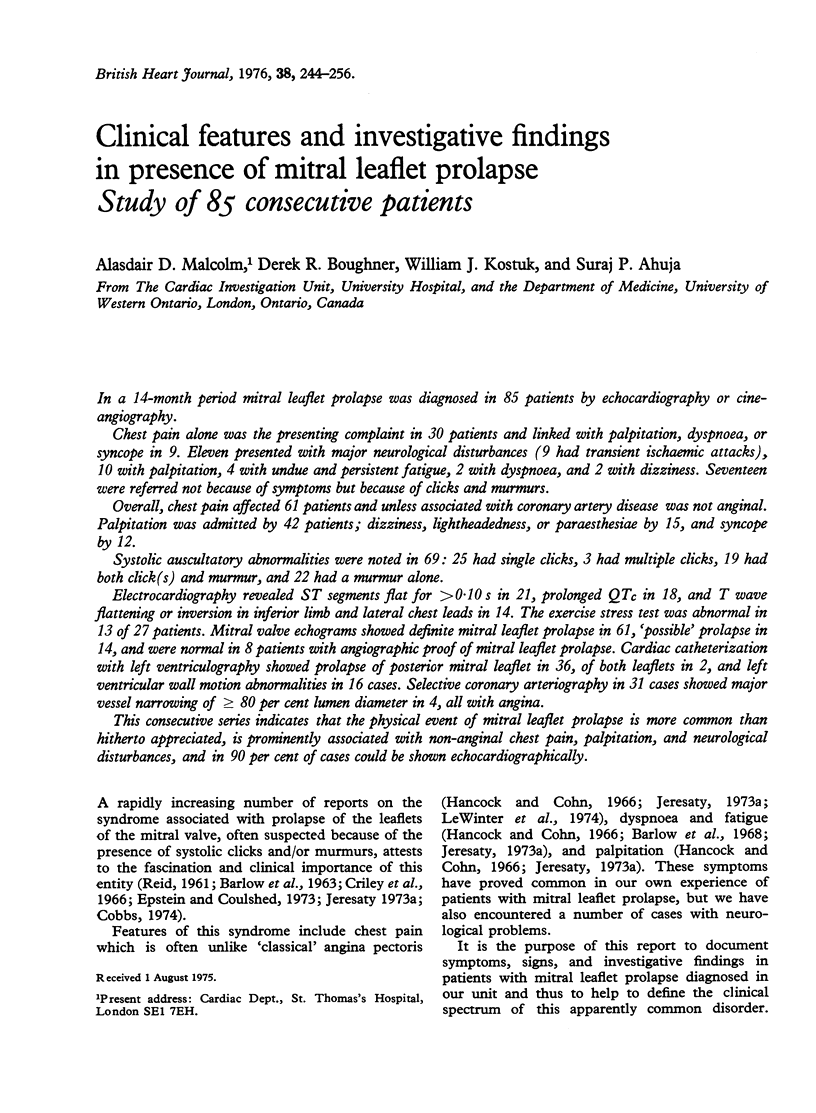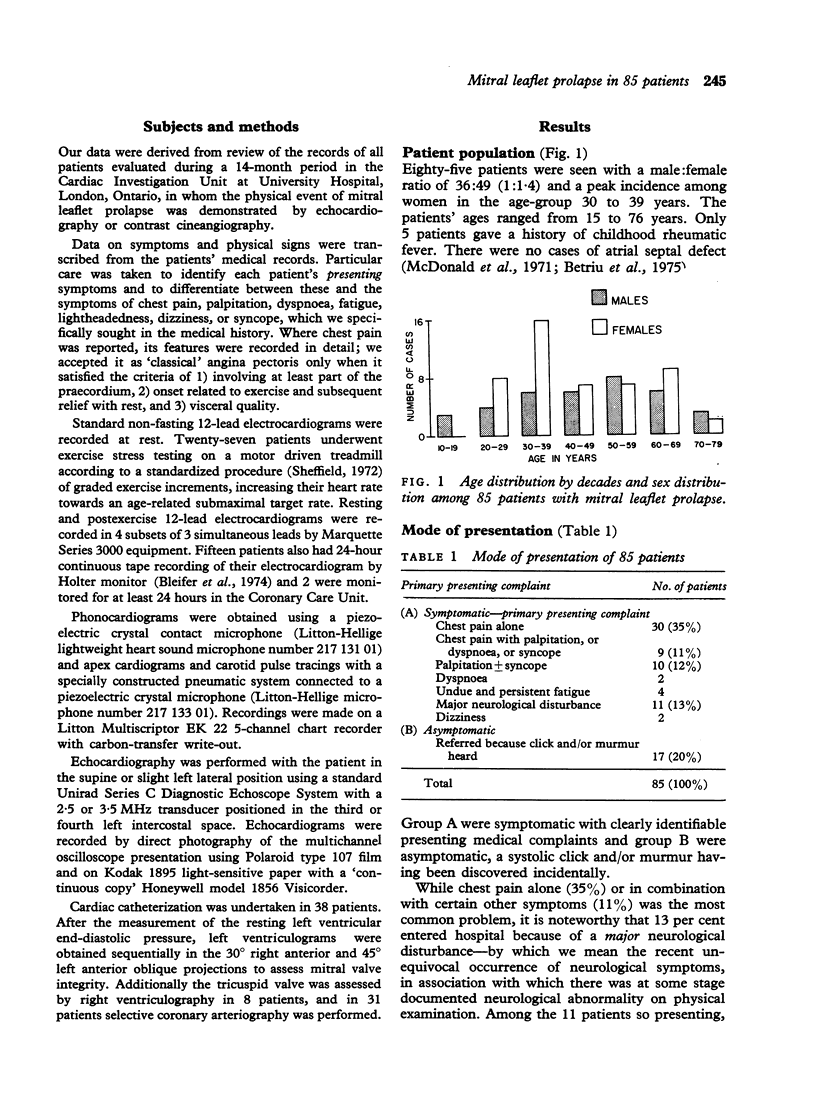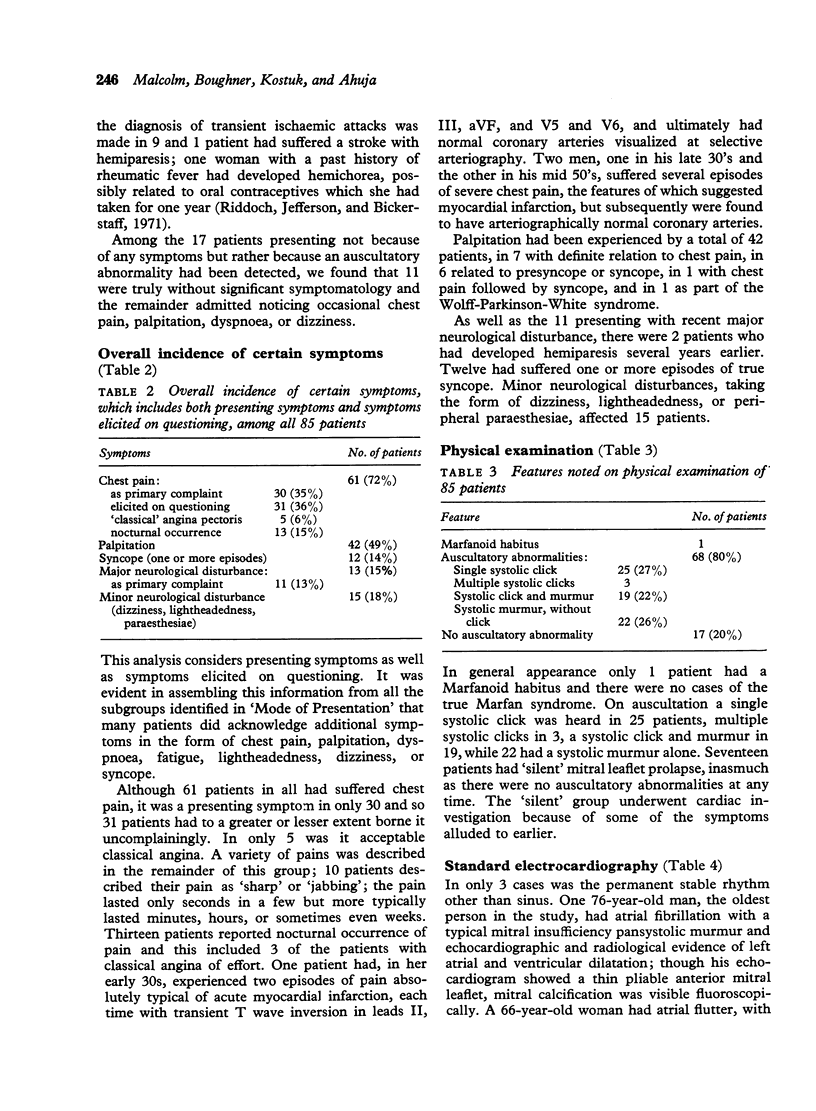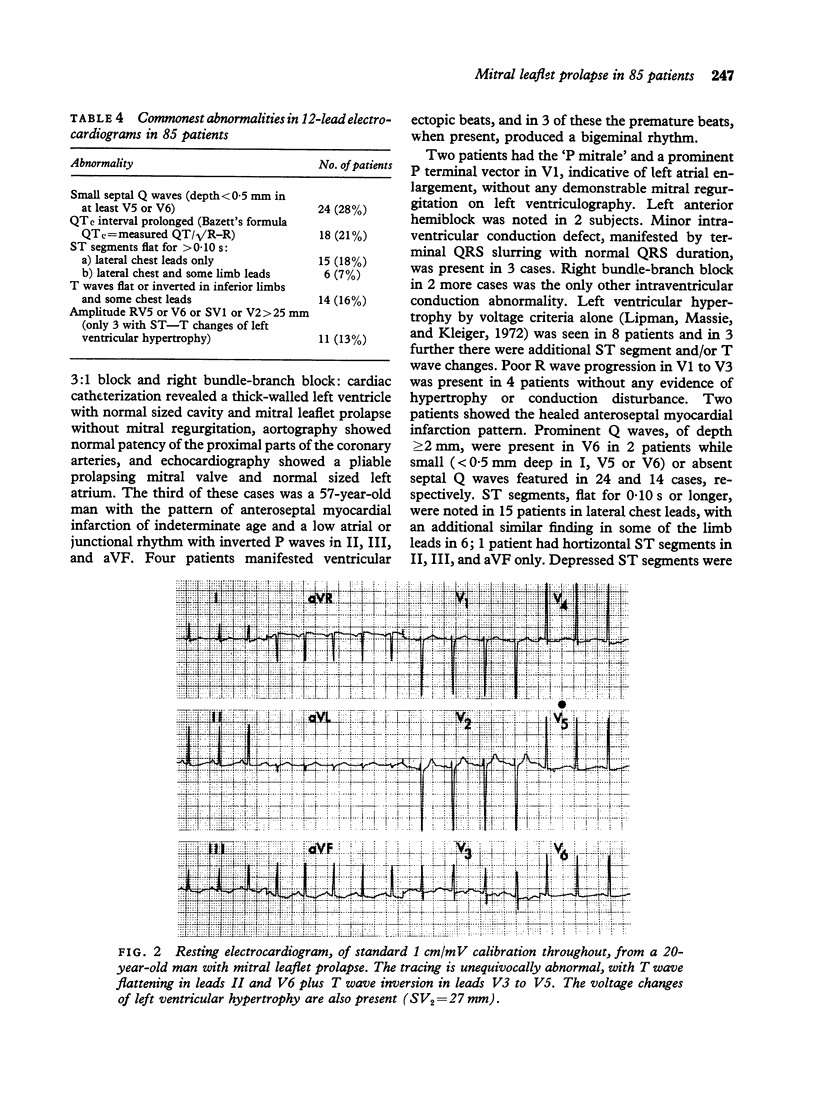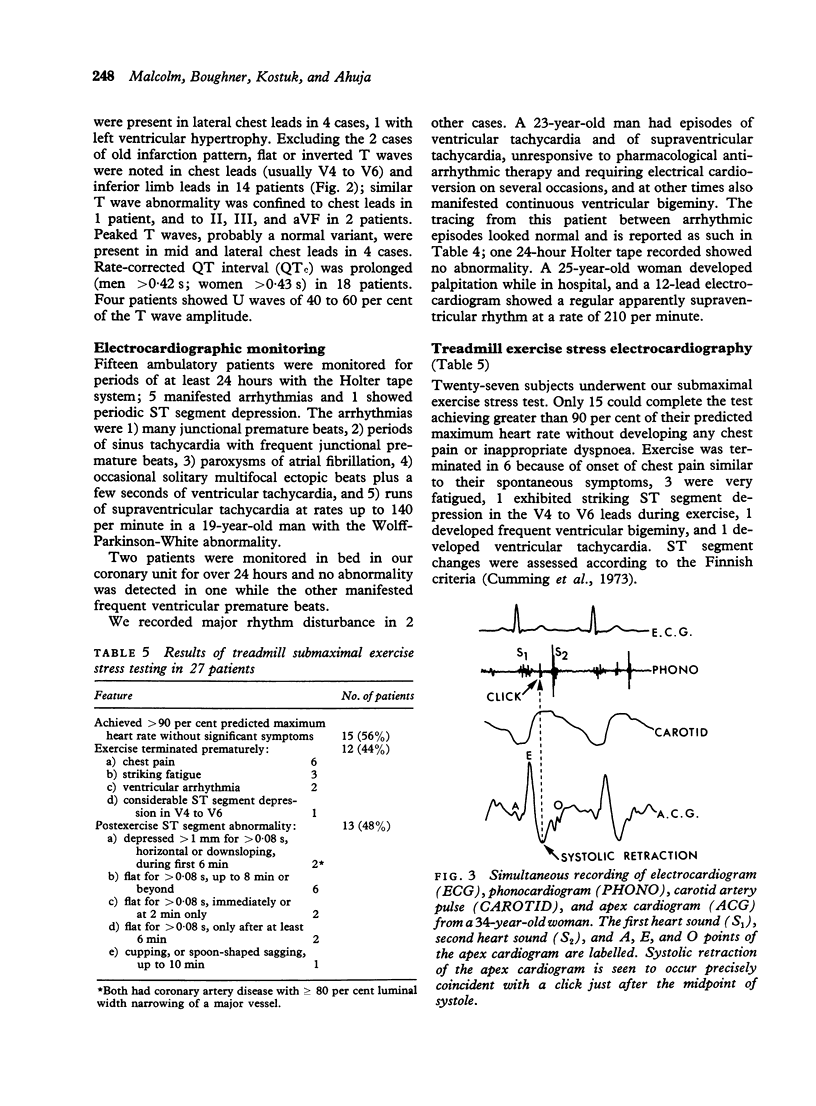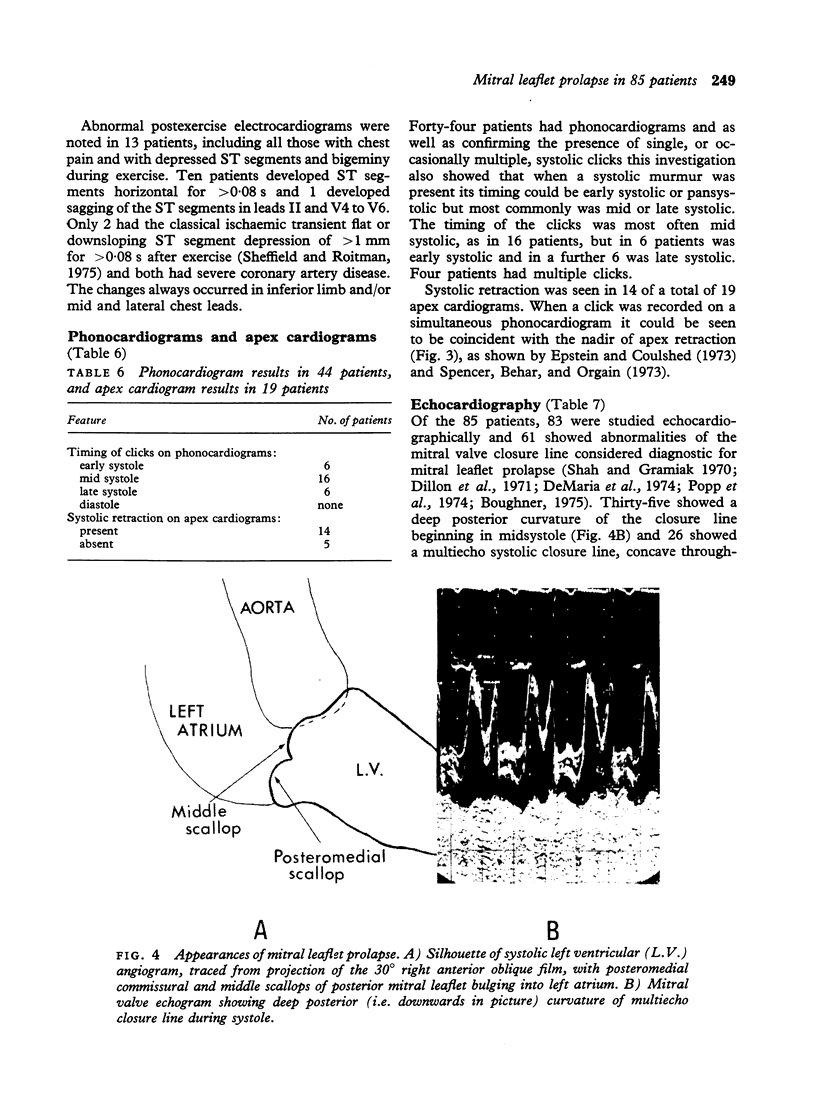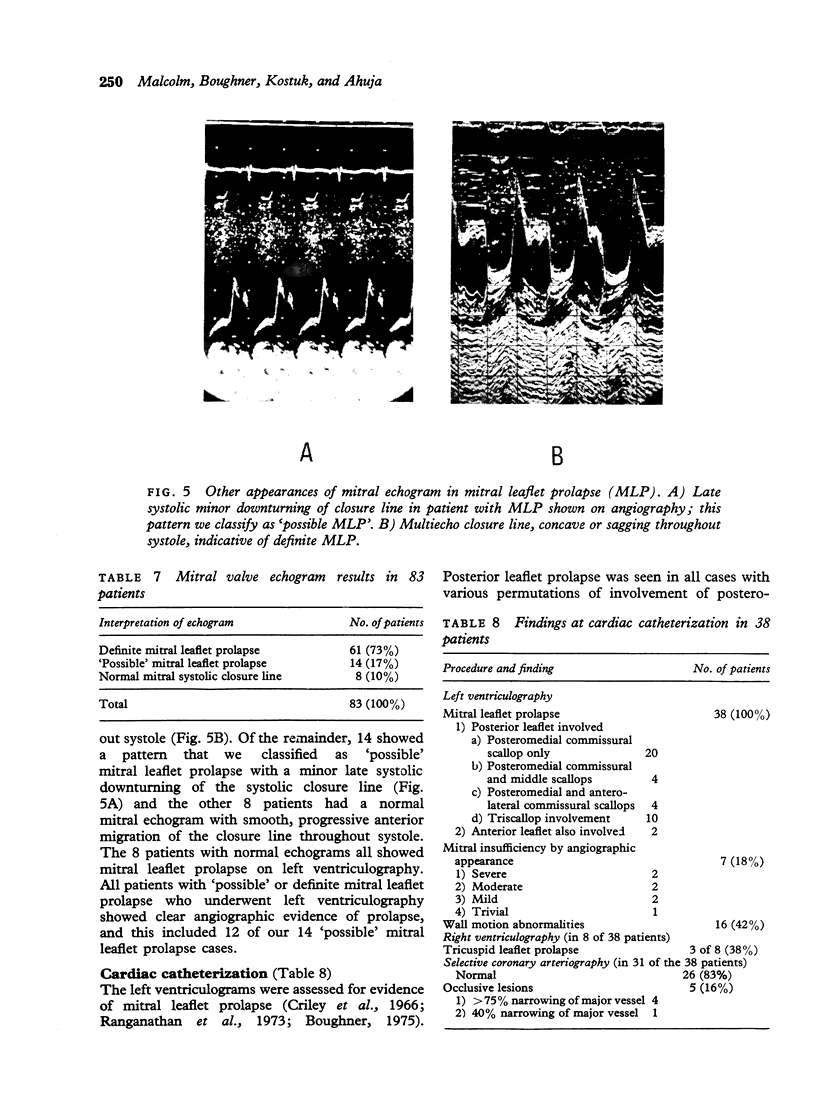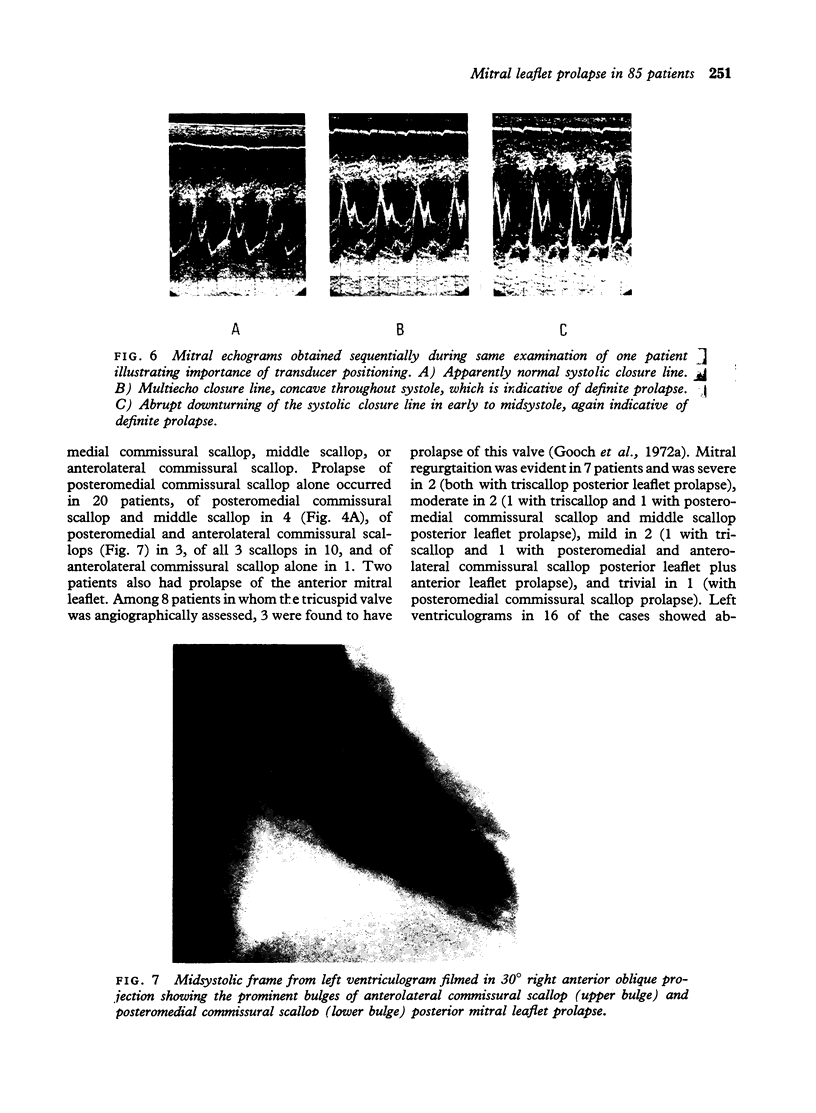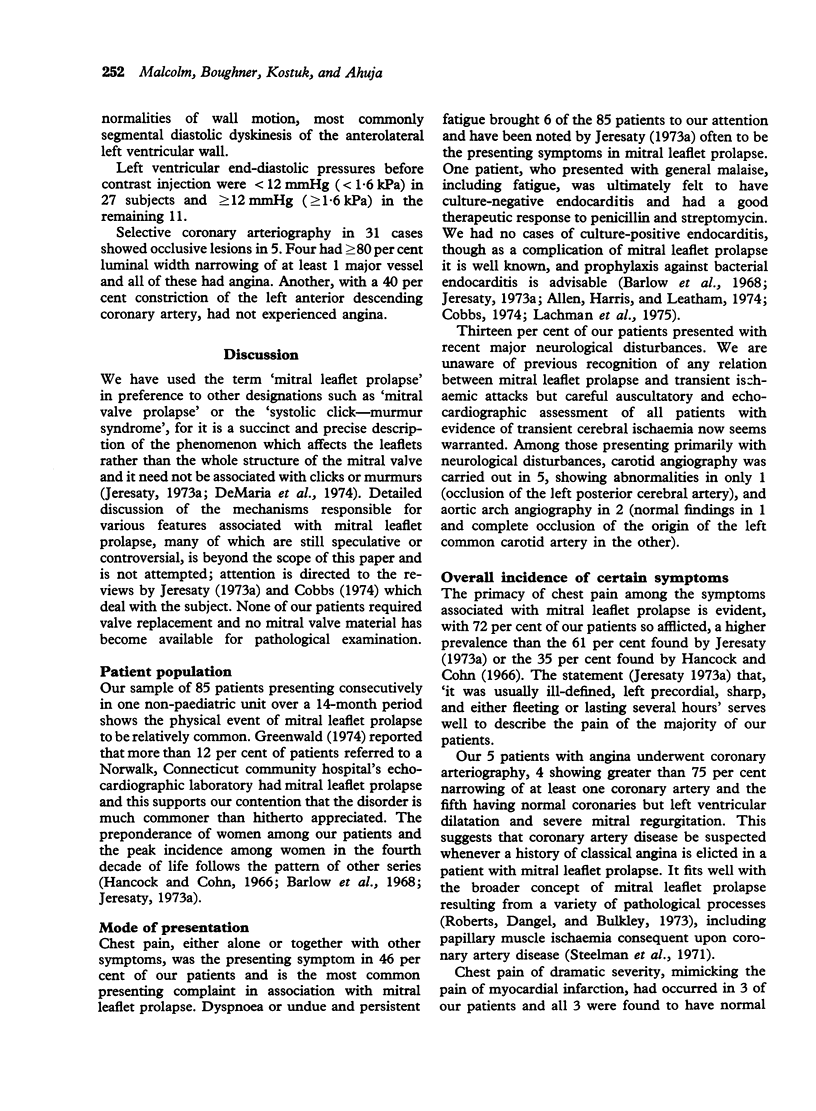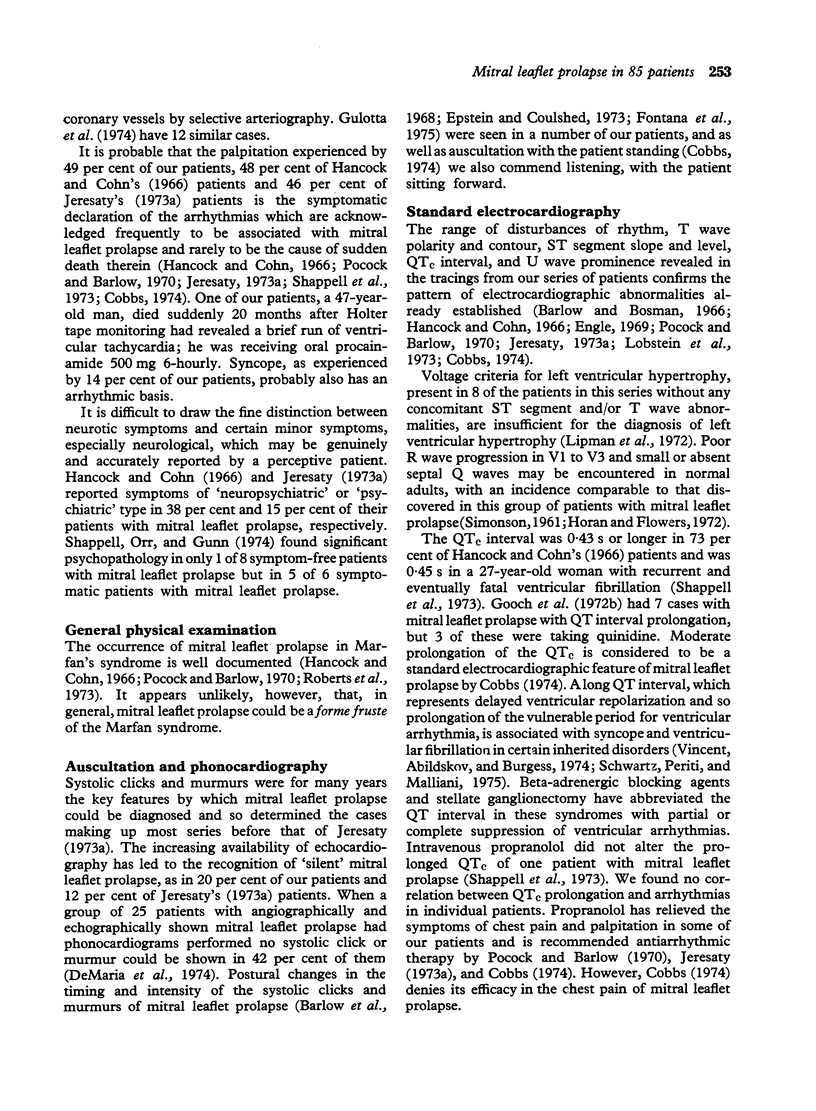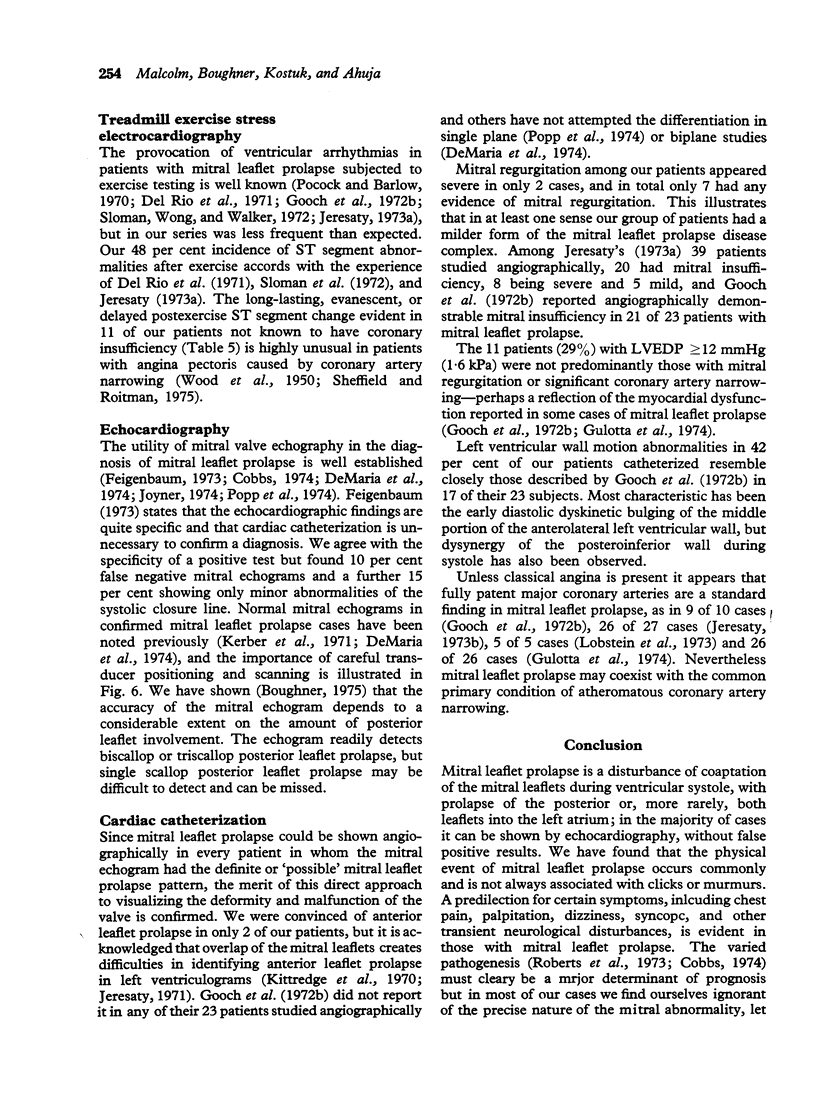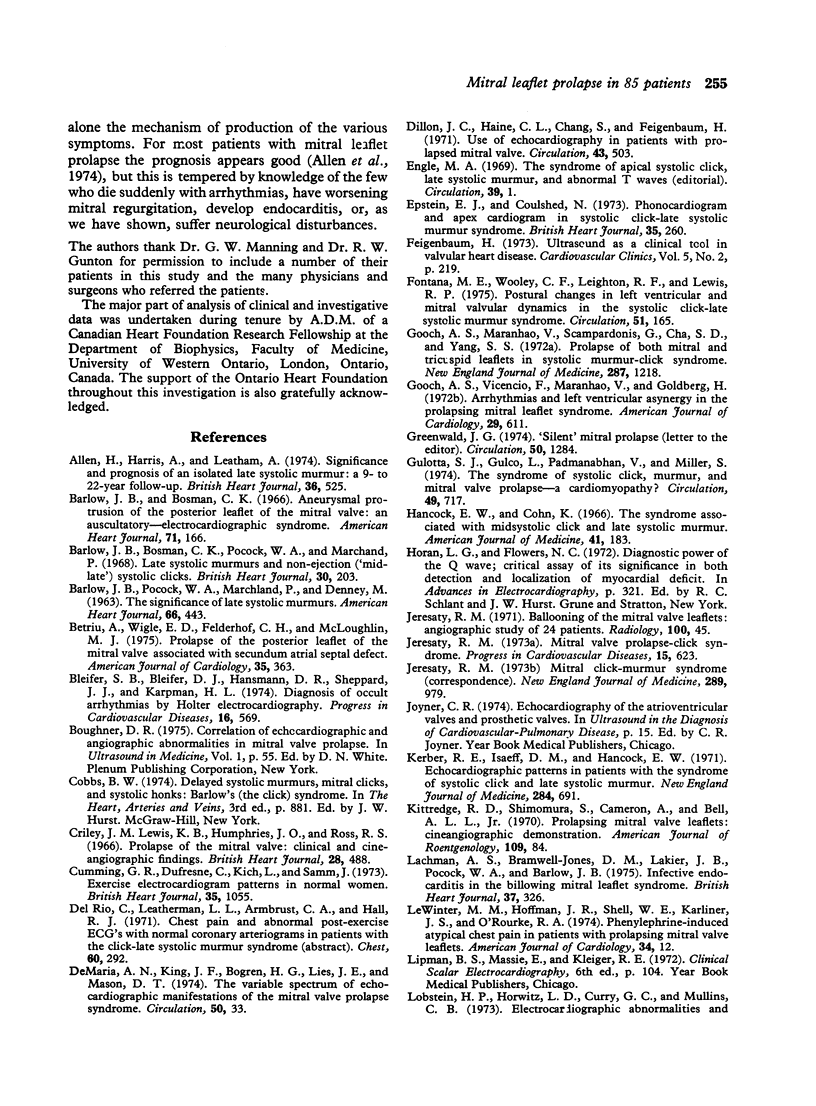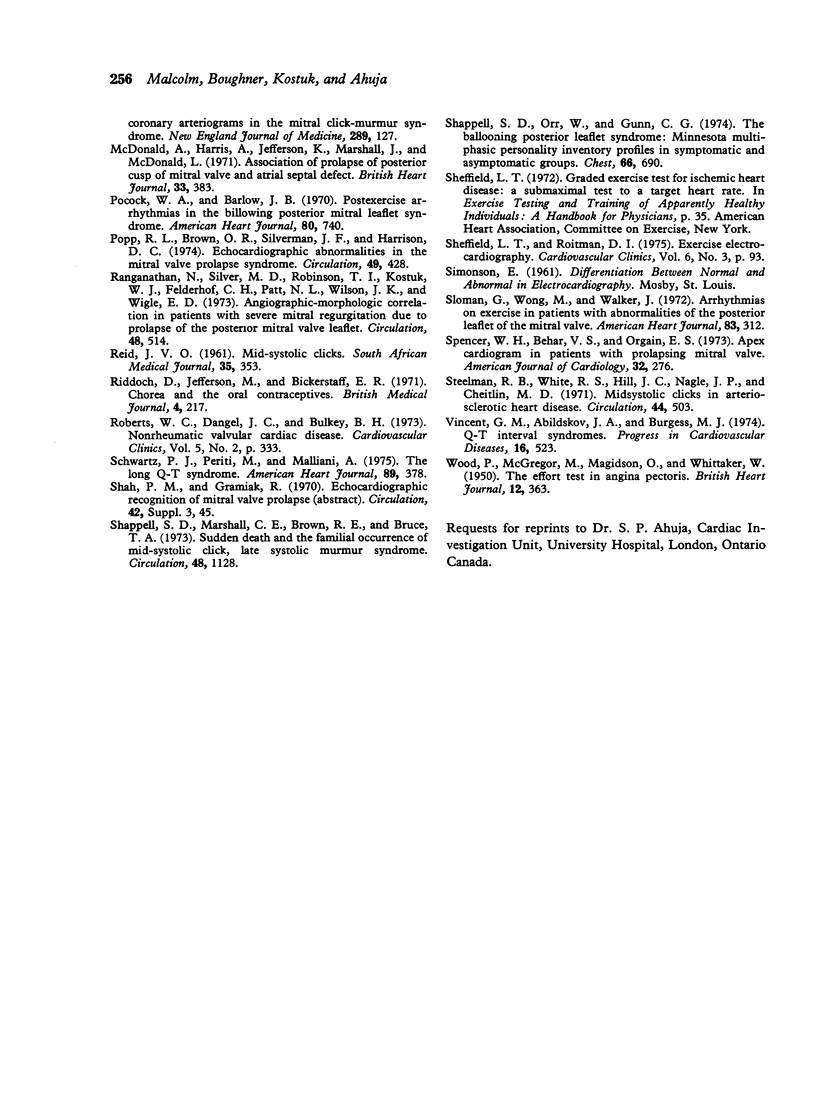Abstract
In a 14-month period mitral leaflet prolapse was diagnosed in 85 patients by echocardiography or cineangiography. Chest pain alone was the presenting complaint in 30 patients and linked with palpitation, dyspnoea, or syncope in 9. Eleven presented with major neurological disturbances (9 had transient ischaemic attacks), 10 with palpitation, 4 with undue and persistent fatigue, 2 with dyspnoea, and 2 with dizziness. Seventeen were referred not because of symptoms but because of clicks and murmurs. Overall, chest pain affected 61 patients and unless associated with coronary artery disease was not anginal. Palpitation was admitted by 42 patients; dizziness, lightheadedness, or paraesthesiae by 15, and syncope by 12. Systolic auscultatory abnormalities were noted in 69: 25 had single clicks, 3 had multiple clicks, 19 had both click(s) and murmur, and 22 had a murmur alone. Electrocardiography revealed ST segments flat for greater than 0-10 s in 21, prolonged QTc in 18, and T wave flattening or inversion in inferior limb and lateral chest leads in 14. The exercise stress test was abnormal in 13 of 27 patients. Mitral valve echograms showed definite mitral leaflet prolapse in 61, 'possible' prolapse in 14, and were normal in 8 patients with angiographic proof of mitral leaflet prolapse. Cardiac catheterization with left ventriculography showed prolapse of posterior mitral leaflet in 36, of both leaflets in 2, and left ventricular wall motion abnormalities in 16 cases. Selective coronary arteriography in 31 cases showed major vessel narrowing of larger than or equal to 80 per cent lumen diameter in 4, all with angina. This consecutive series indicates that the physical event of mitral leaflet prolapse is more common than hitherto appreciated, is priminently associated with non-anginal chest pain, palpitation, and neurological disturbances, and in 90 per cent of cases could be shown echocardiographically.
Full text
PDF